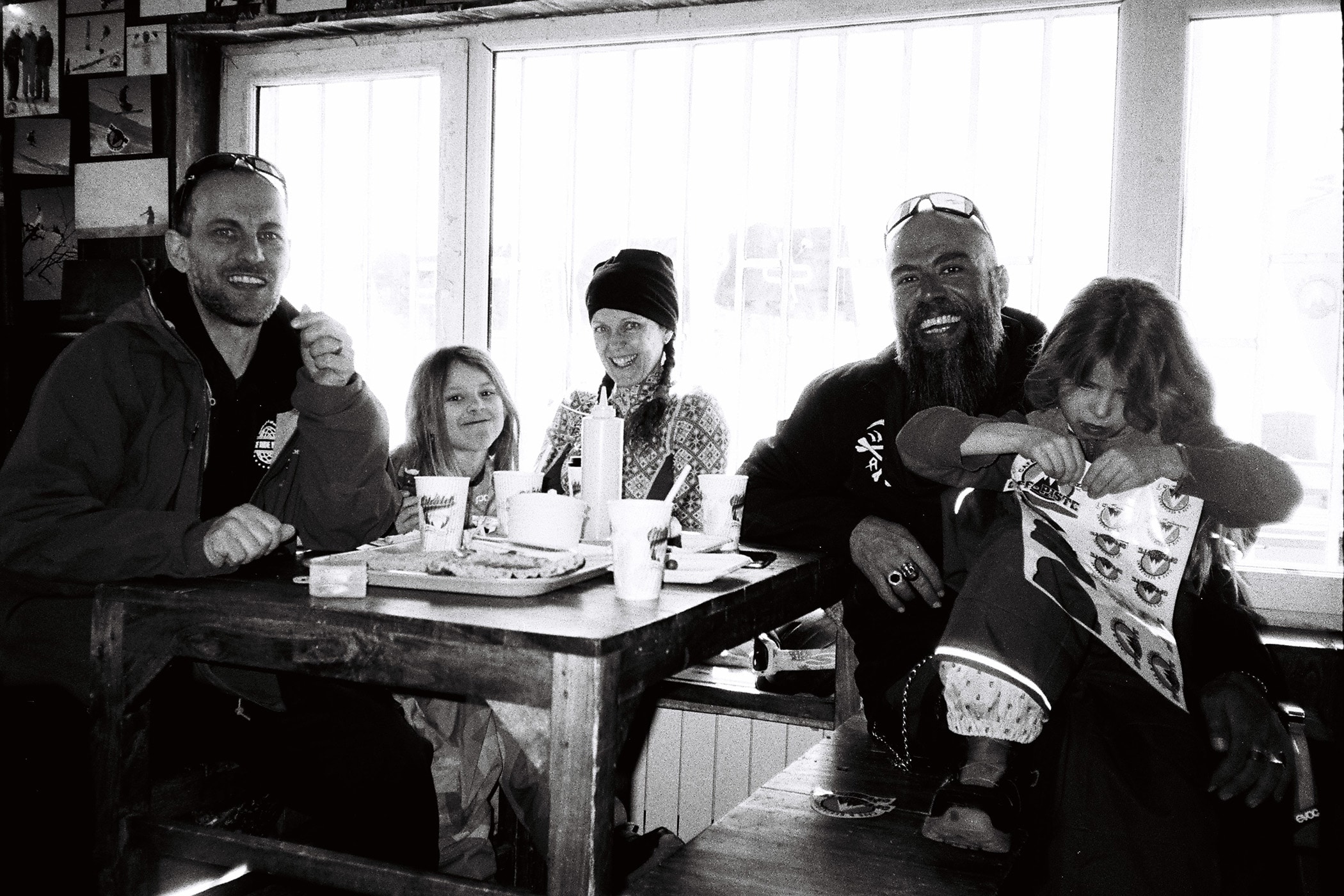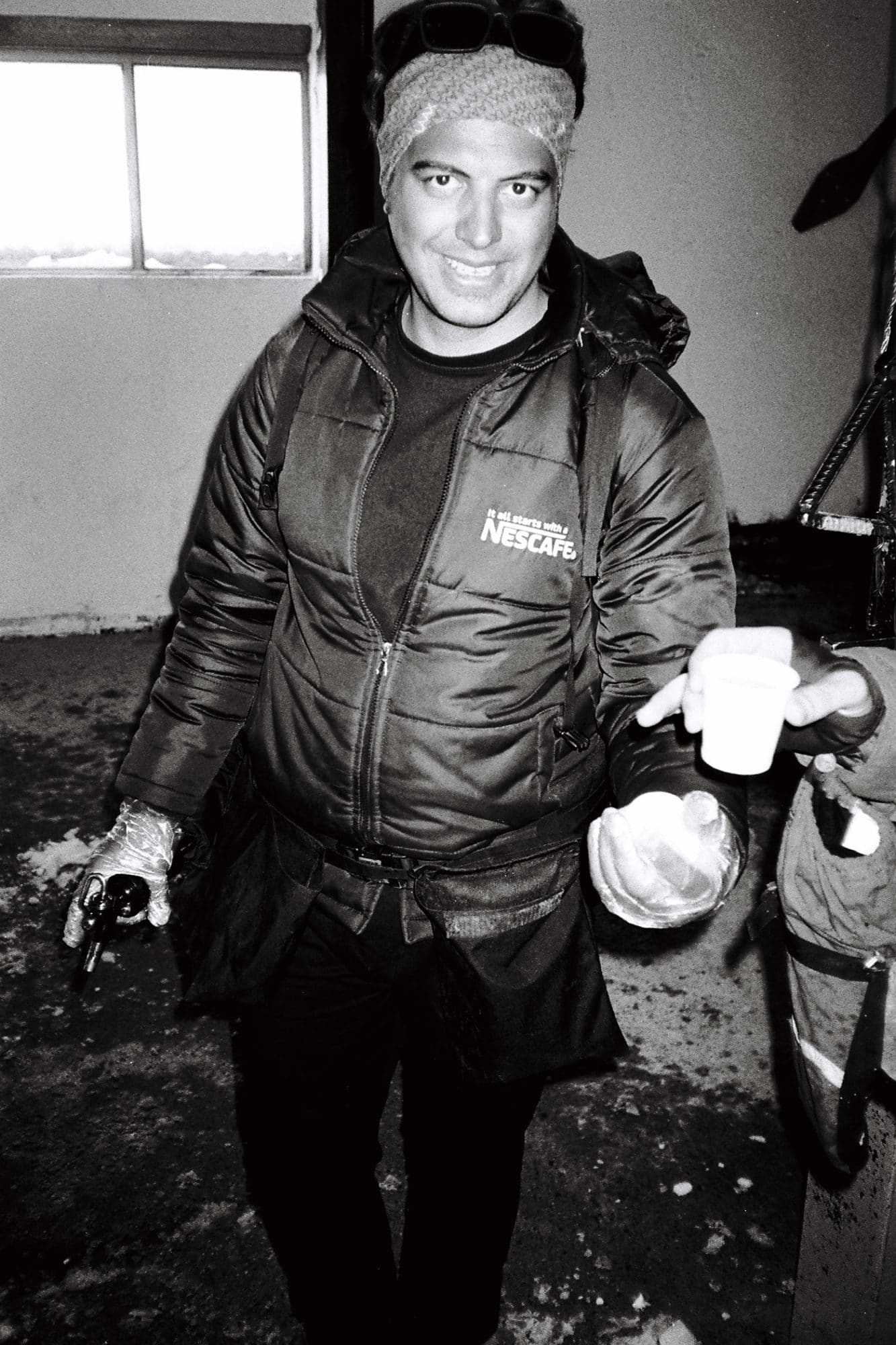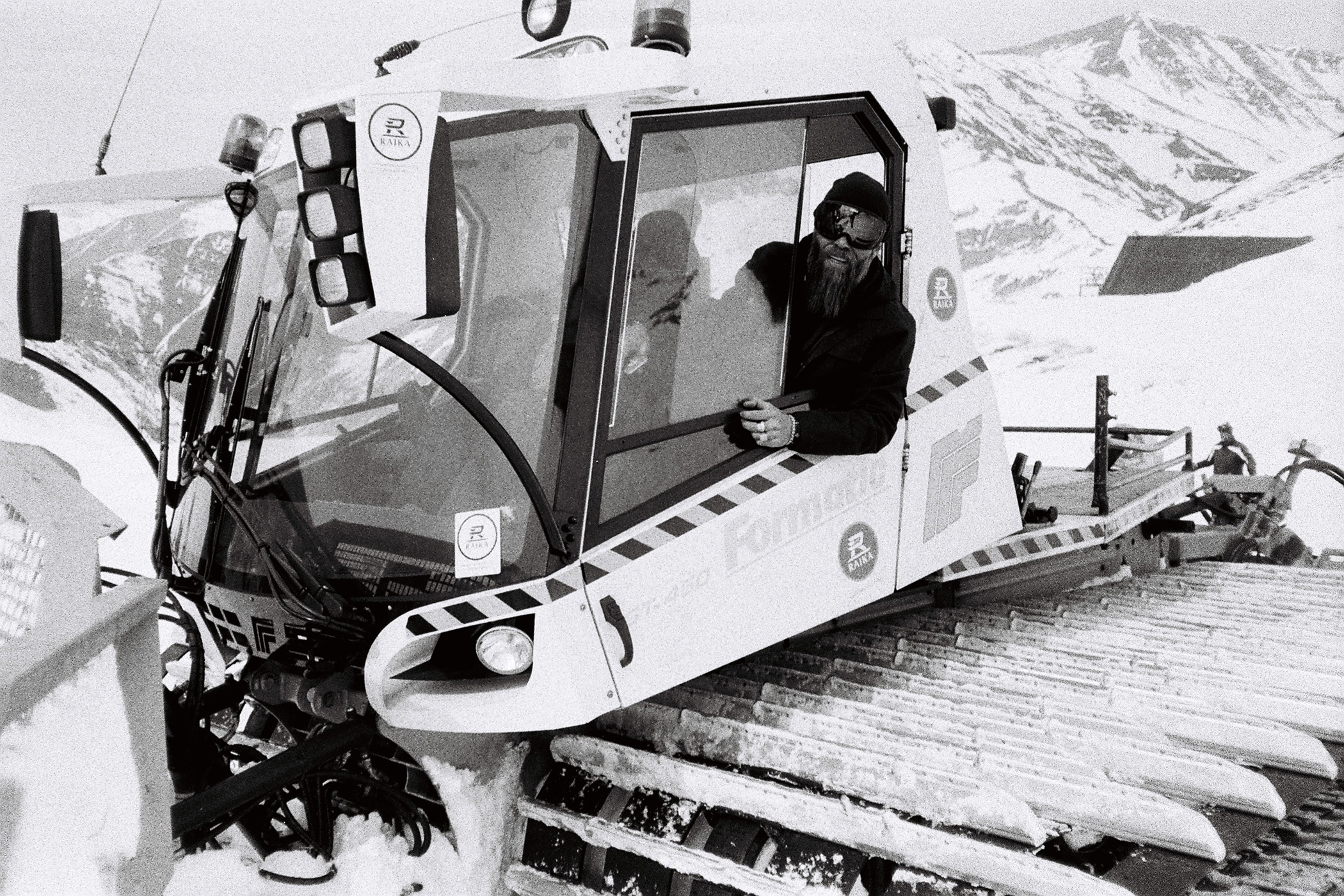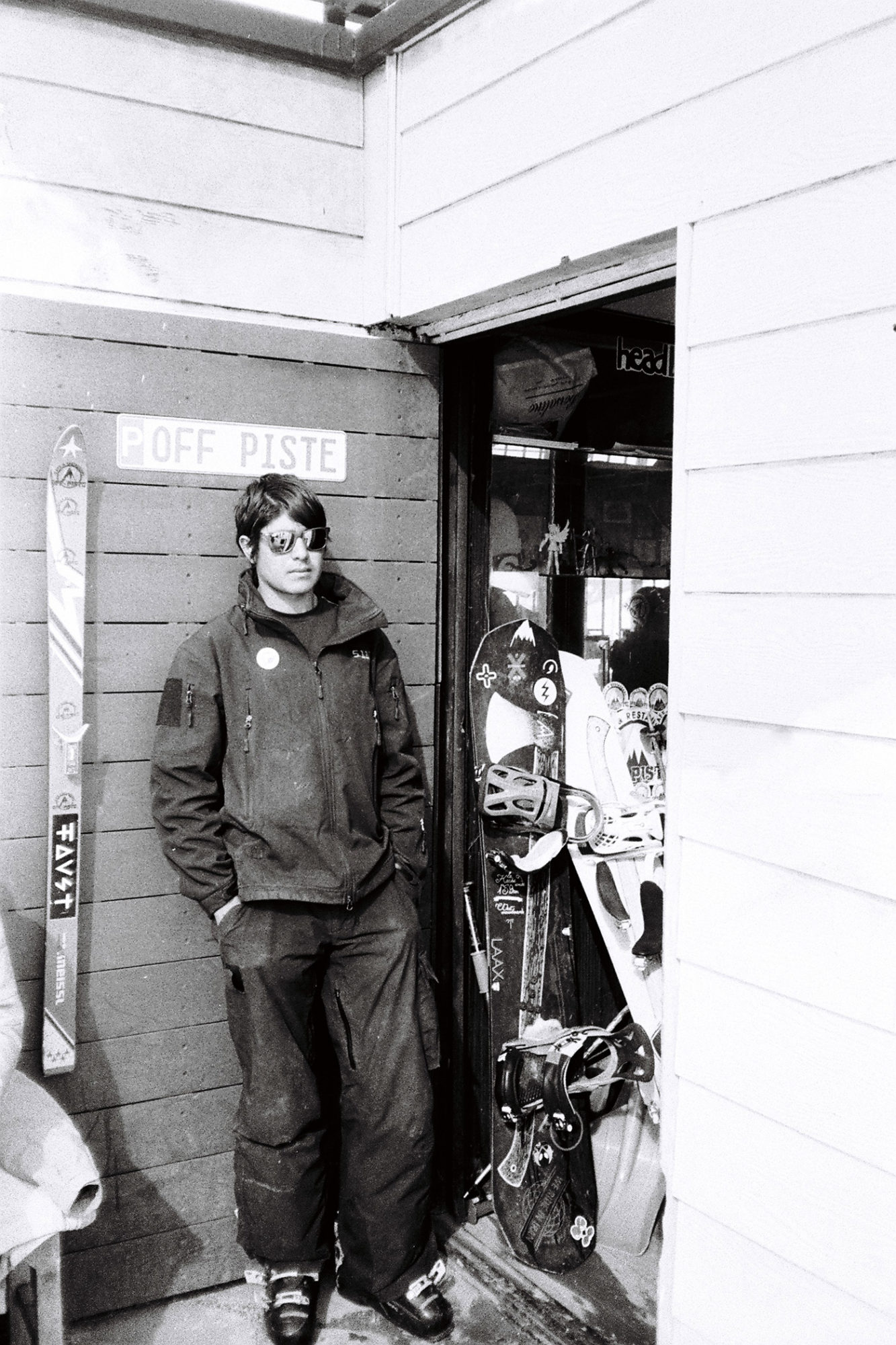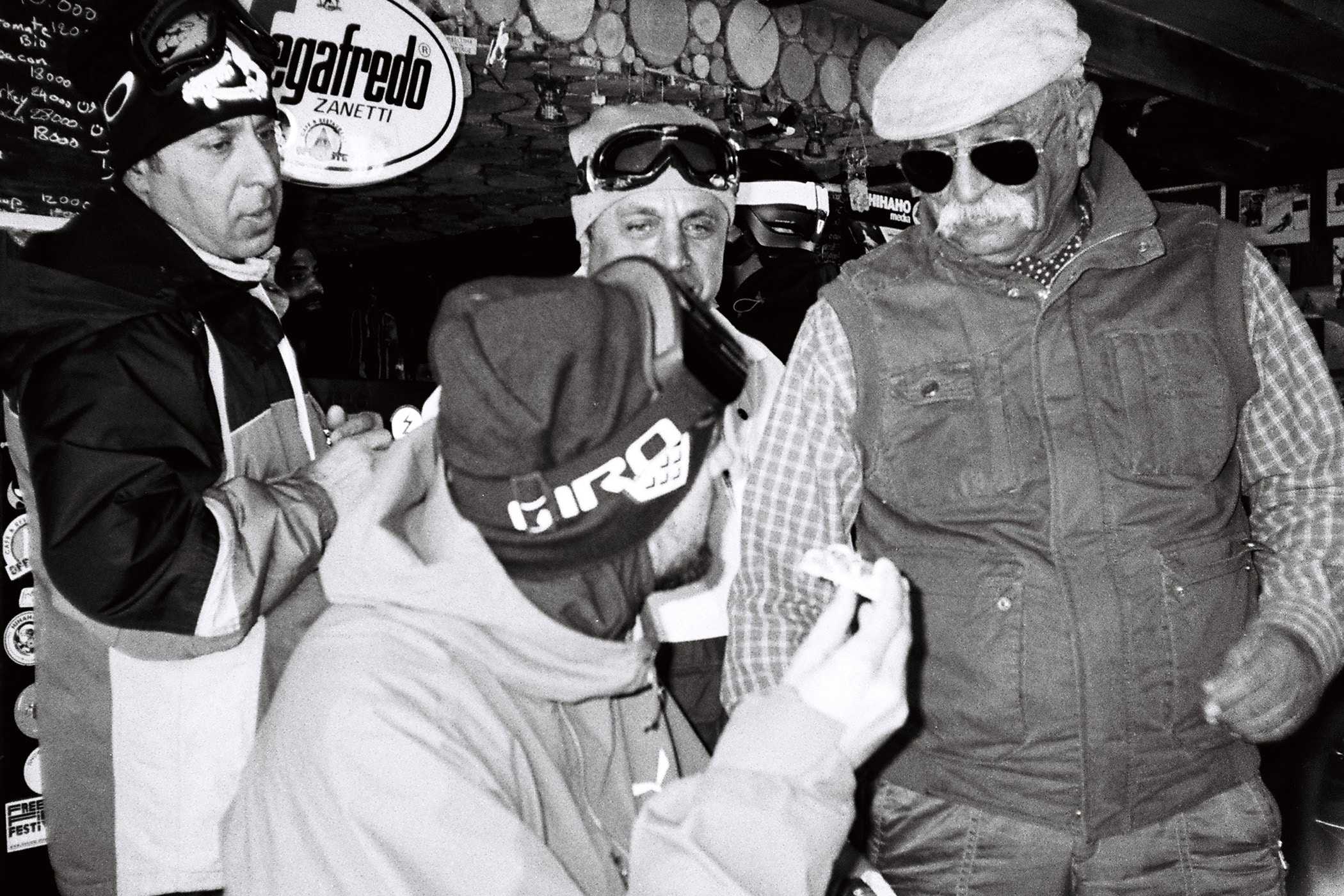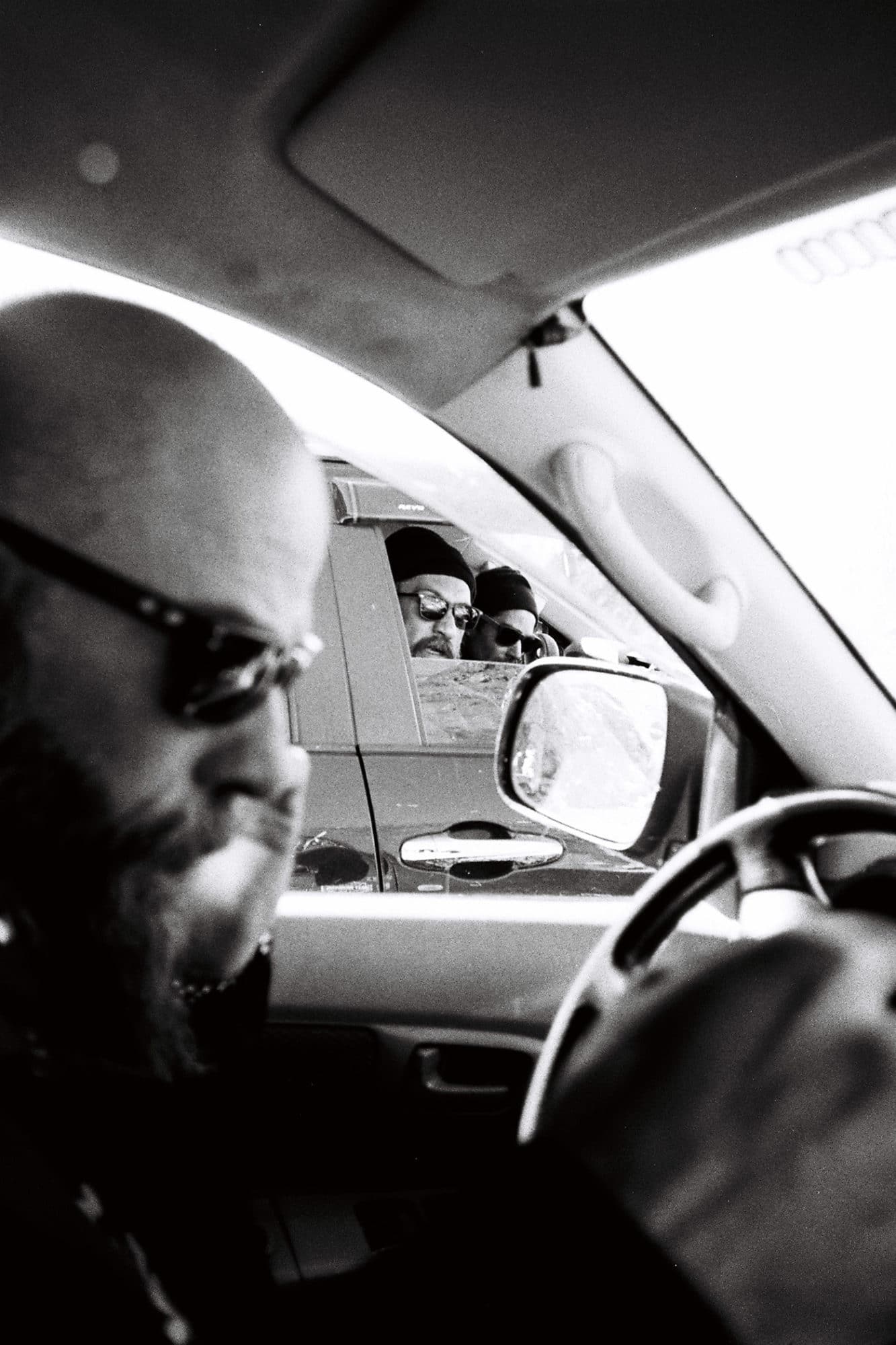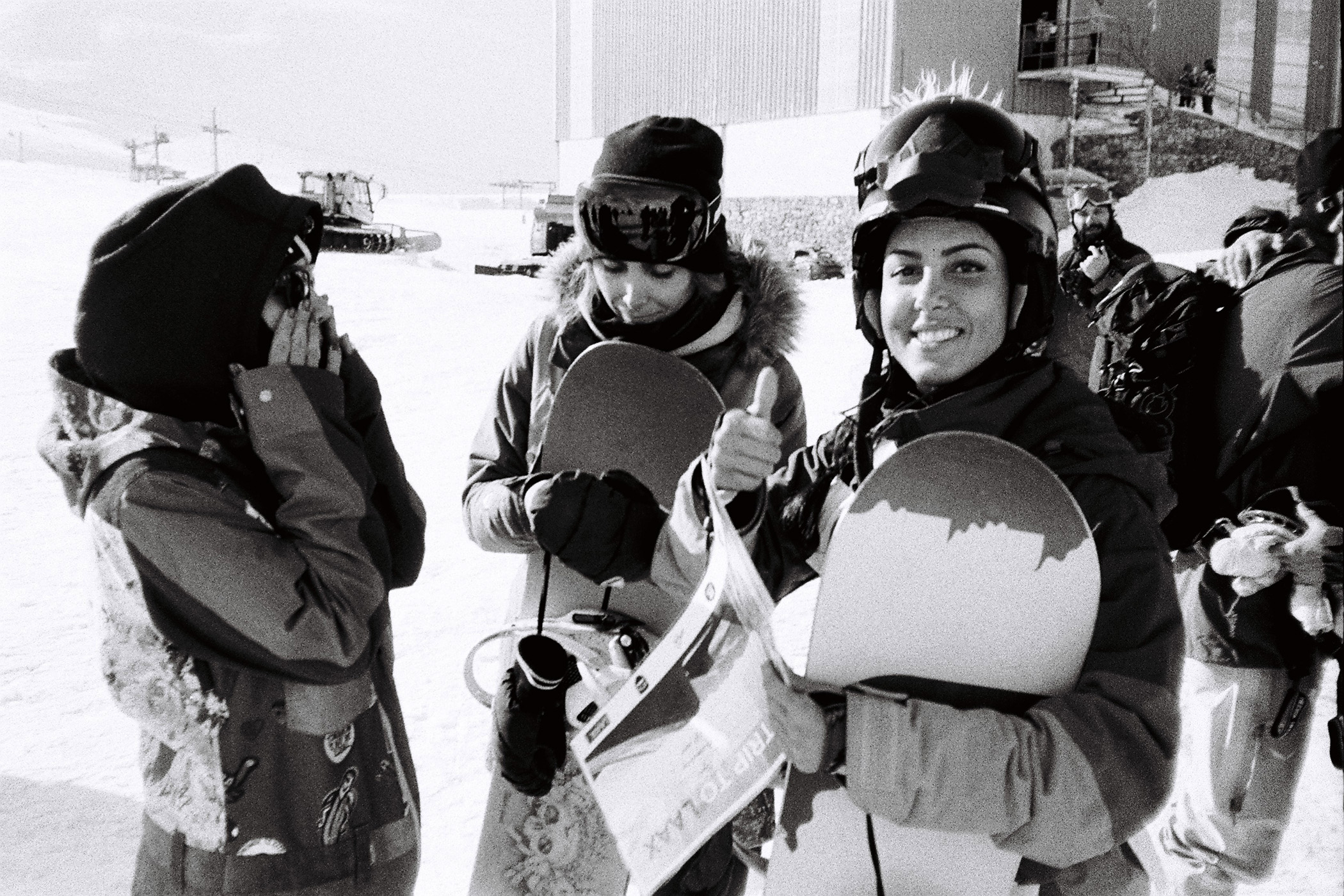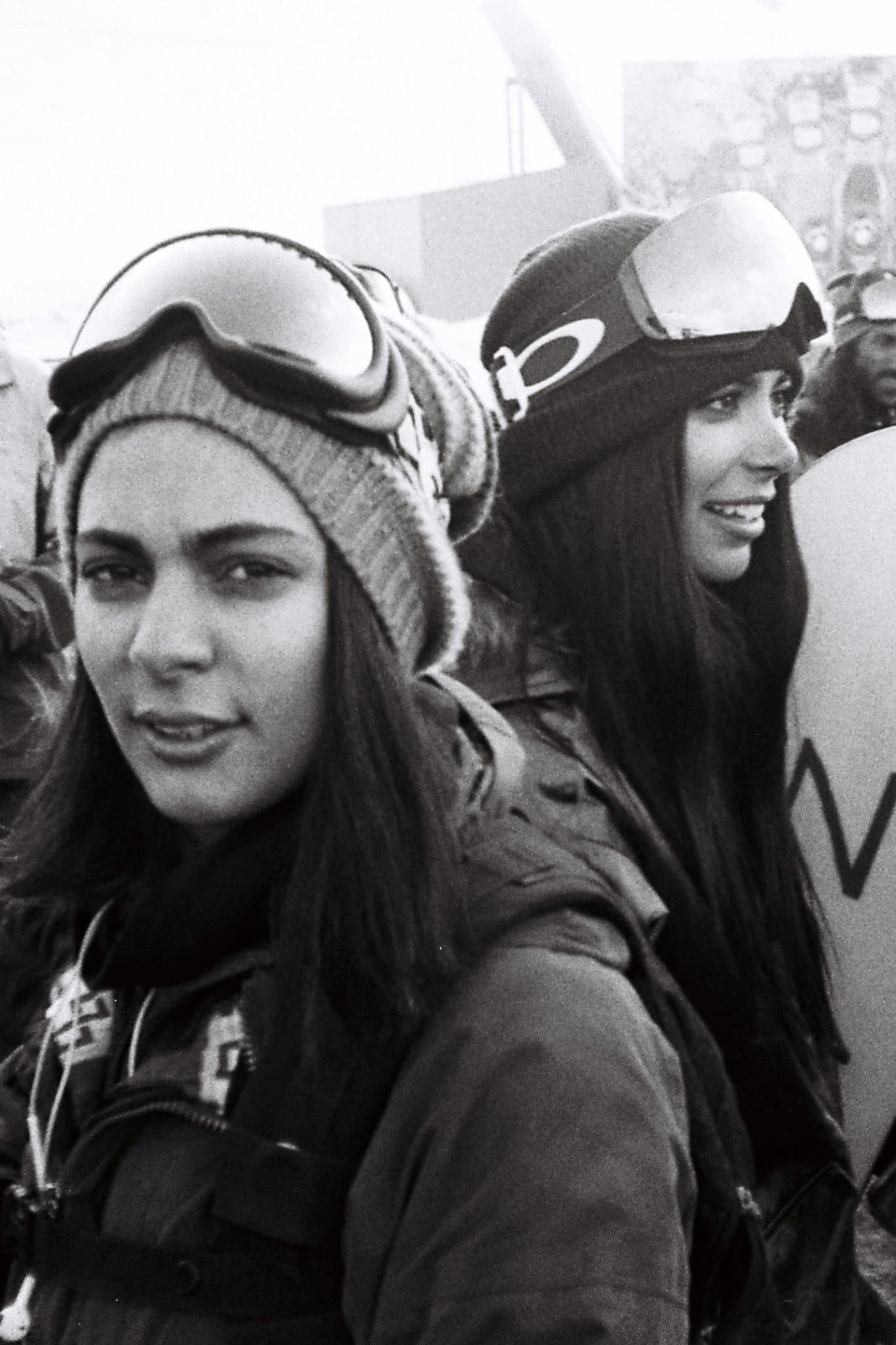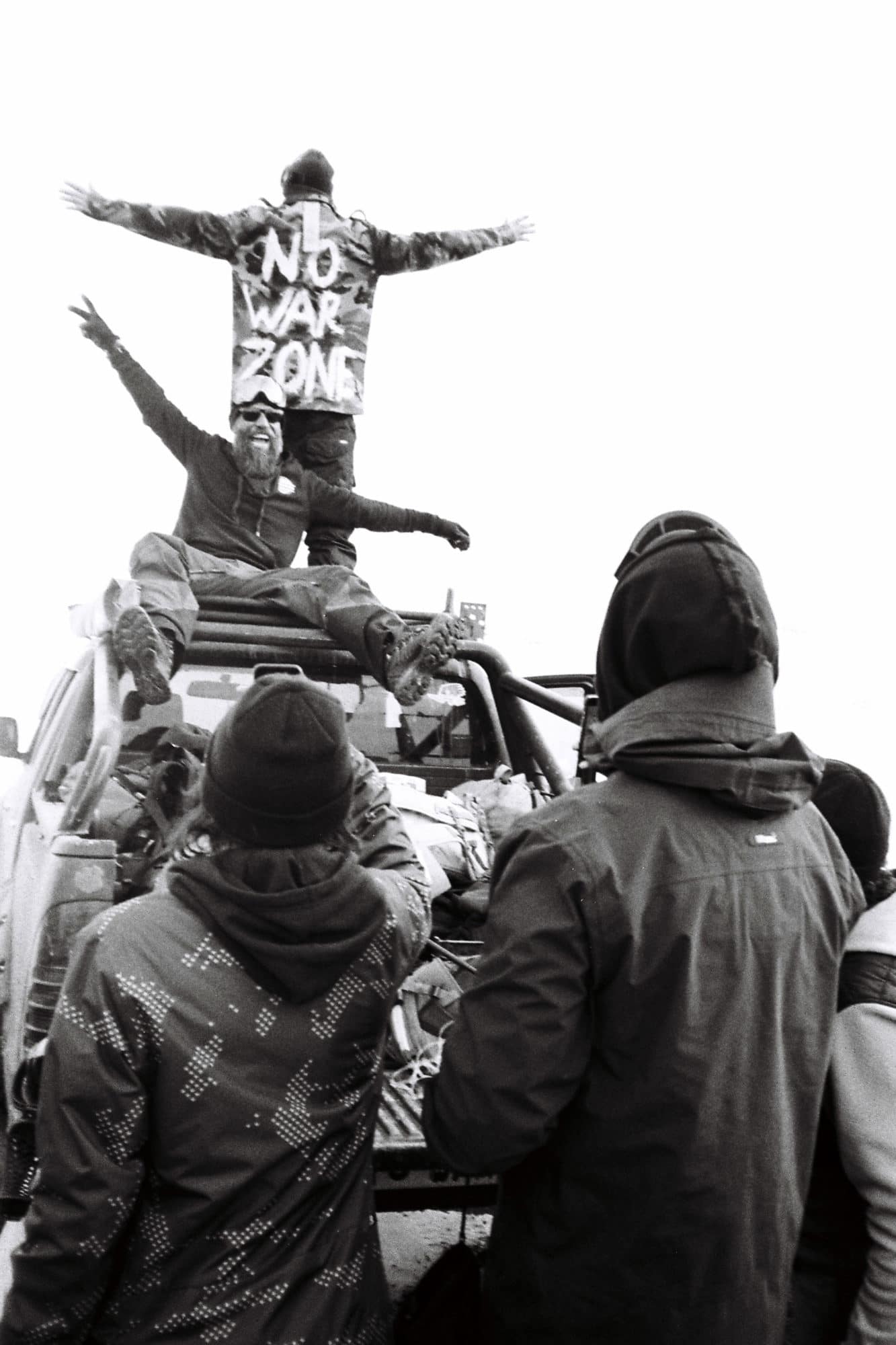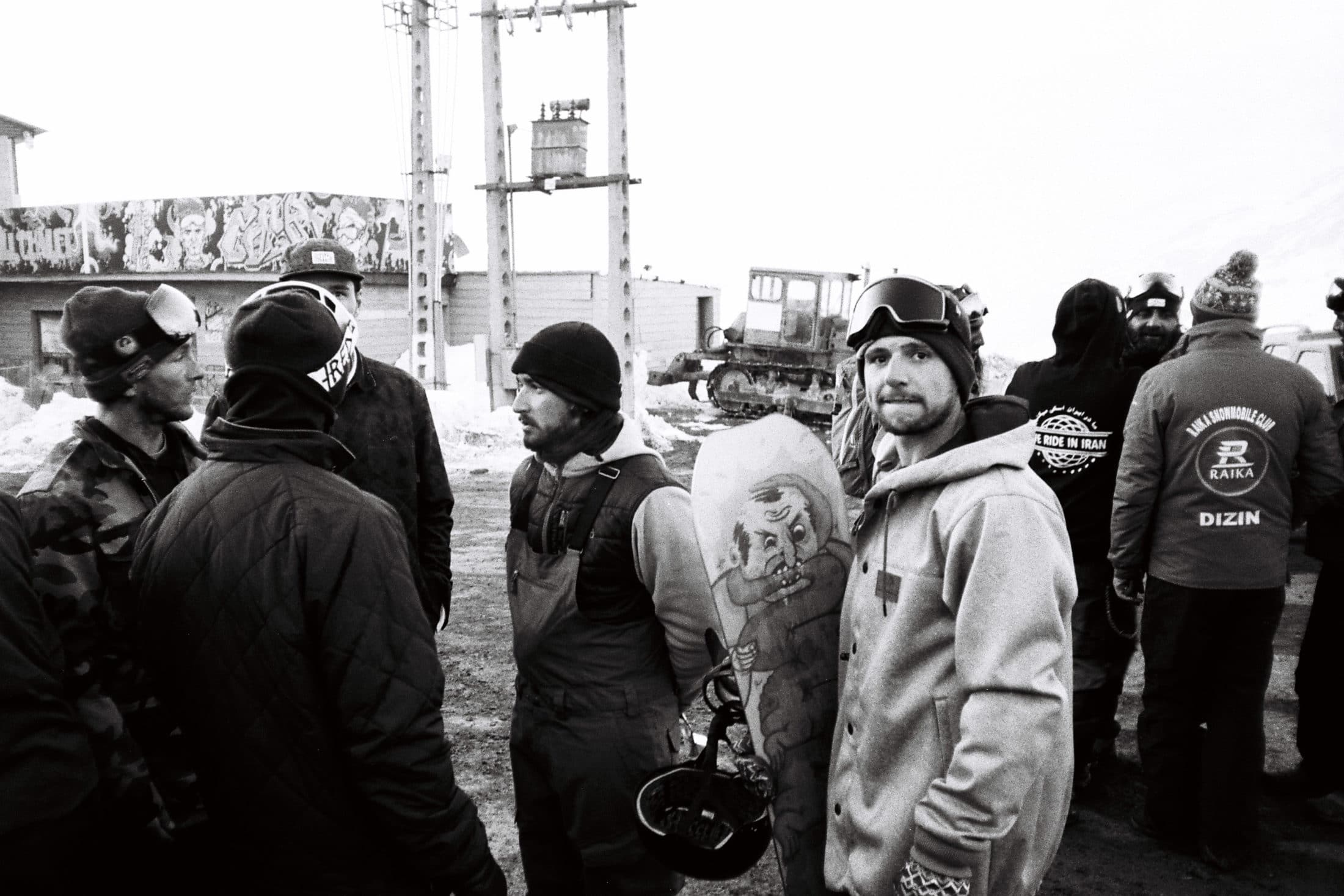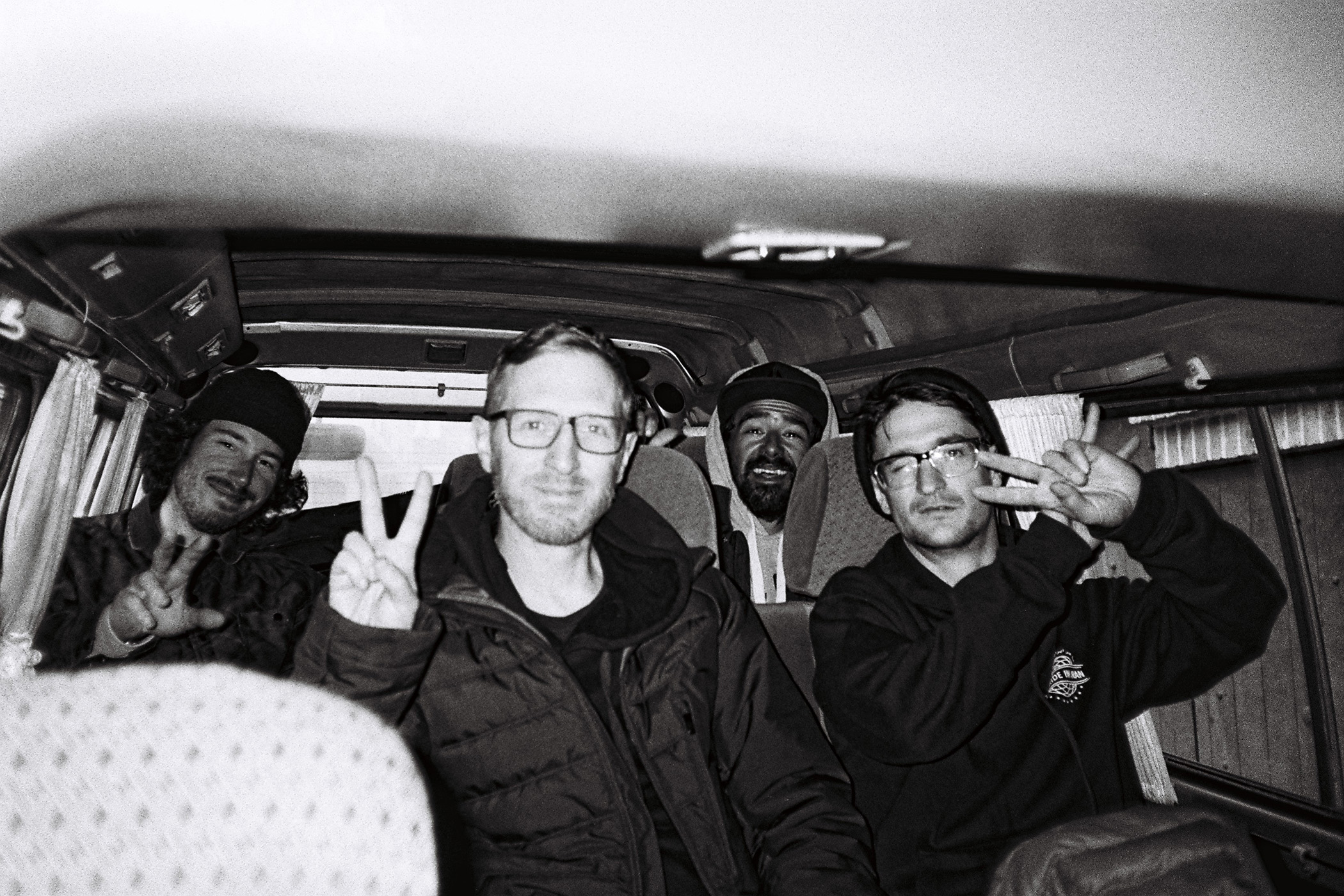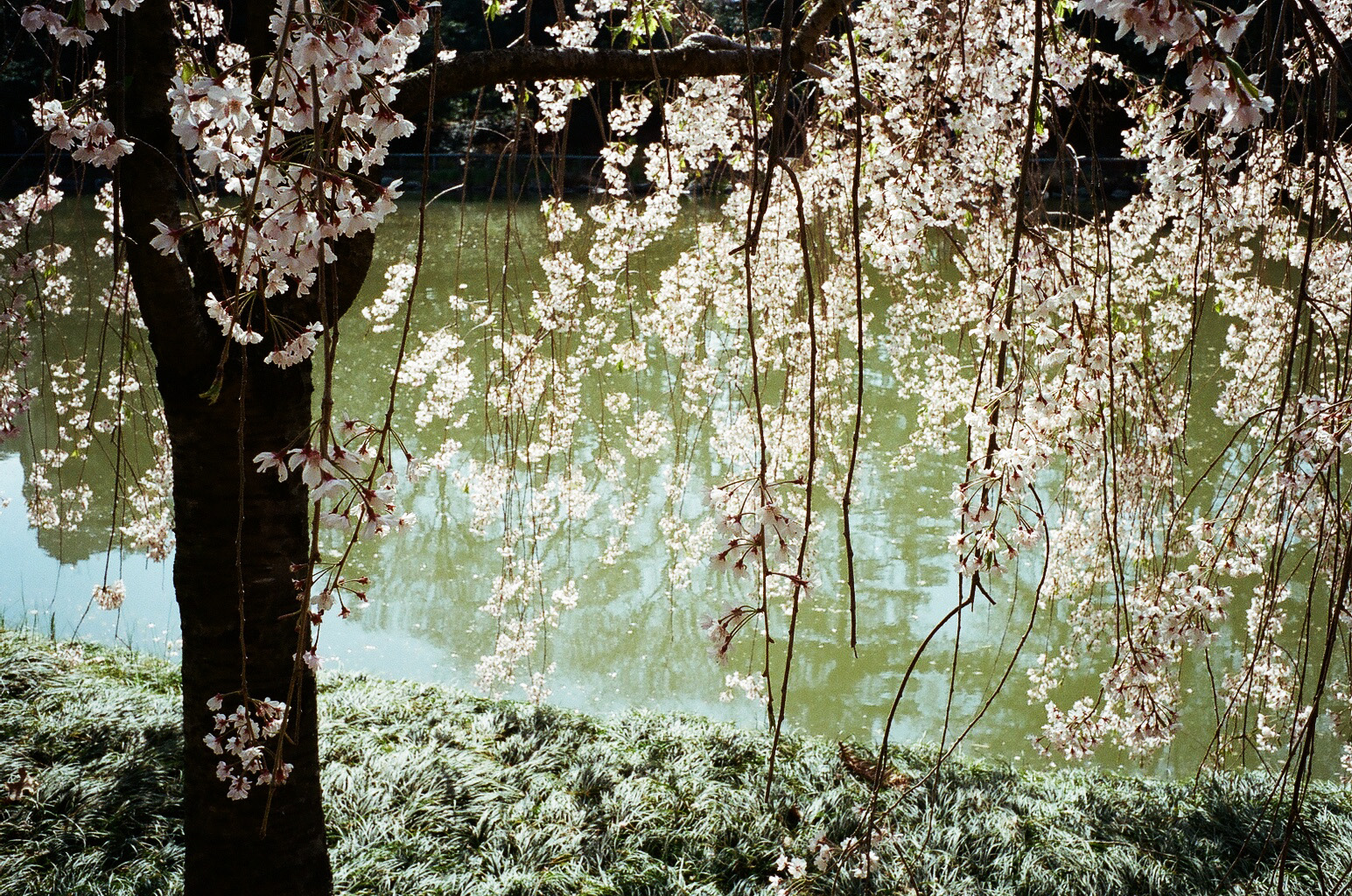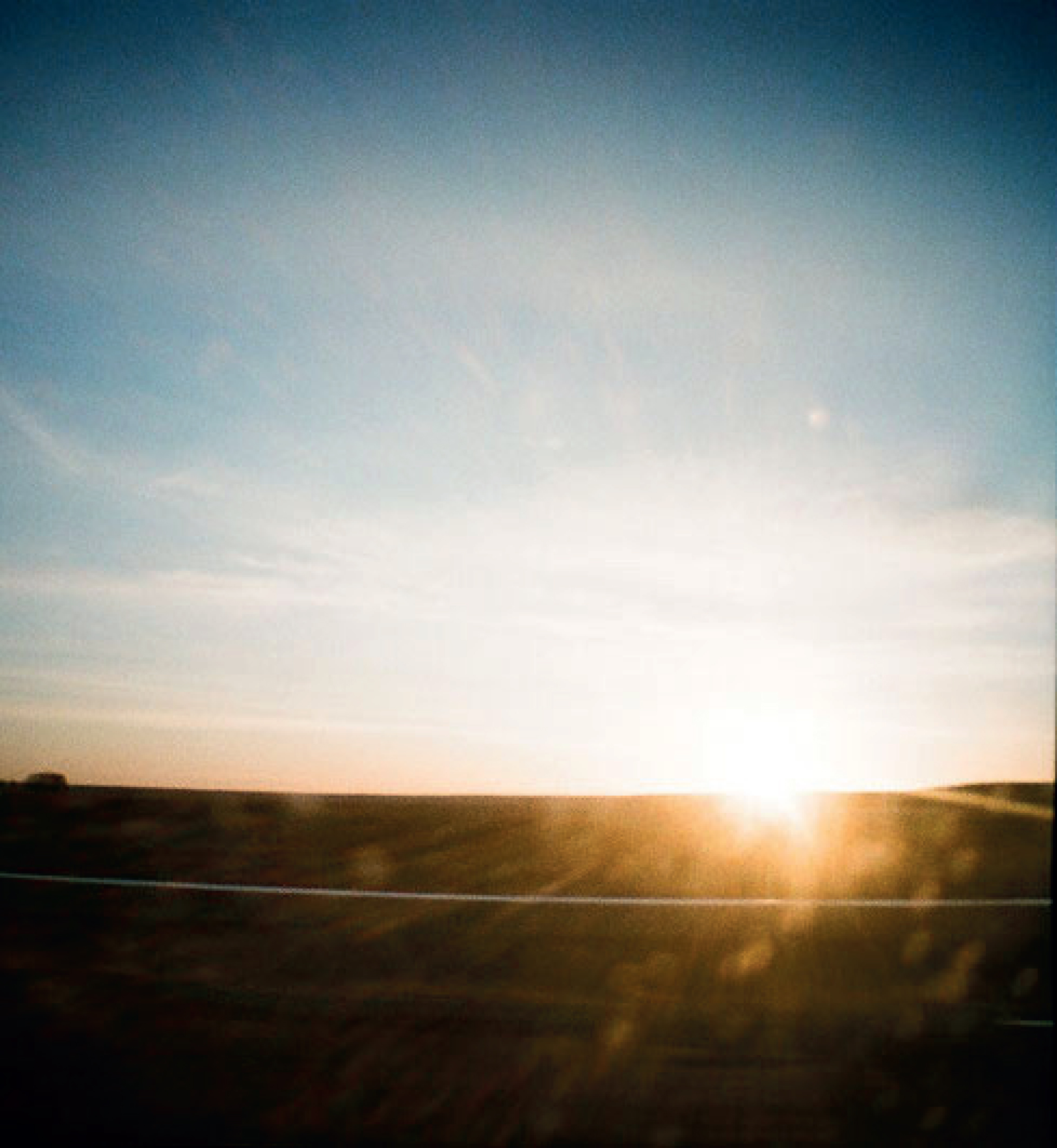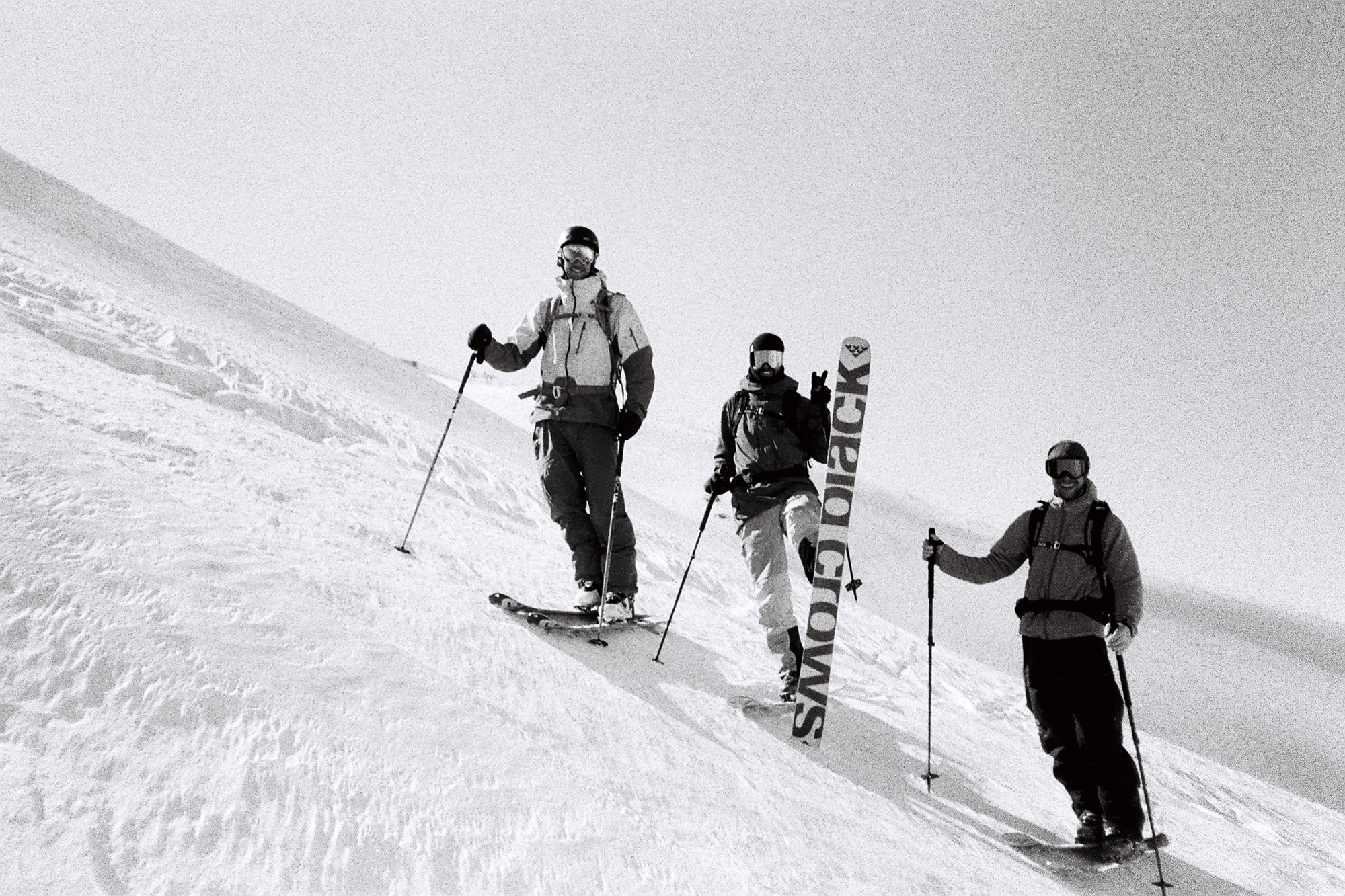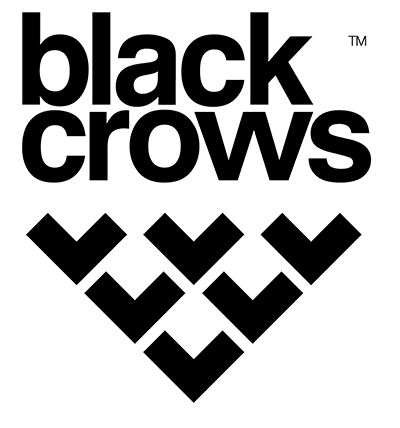In 2017, Swiss ambassadors Arnaud Cottet and Loïs Robatel’s foray into Iran accompanied by Jag and cameraman Alex Amiguet. A trip to the fertile crescent where man first domesticated an animal as livestock : the goat. An expedition to the home of livestock farming, where the massive mess all began, basically ending paradise on earth.
Note from the author : why waiting so long to publish this second part? Someone may ask. Probably because it took me some time to realize this magical journey had finally come to an end.
In the evening as we were putting our things out to dry and discussing the day to come, there was a knock on the door. Our neighbours, on holiday from Chiraz, a famous town located further south, come into our room with a mischievous air of naughty conspirators. They carefully reveal an object wrapped in newspaper, it’s a bottle containing a liquid of a familiar colour: wine. This maligned liquid, forbidden since the dawn of the Islamic Republic comes from their home town, which was a big wine producing region before the arrival of the mullahs. These days the vines officially produce grape juice but you can’t just destroy an age-old custom with a recital of the Koran. With our benefactors leaving us in a concerto of thank yous and knowing collusion, we open the bottle that we’re sure will be first grade plonk. But no! In fact it was a totally palatable nectar that would have had us exalting verses of Hafez or Sa’di if only we new any. Perhaps prohibition enhances your sense of taste…I’m not sure but the bottle is finished off in a couple of shakes and its warmth envelopes us as we wander the streets in search of real food and not pizza or kebabs.
The breakfast that’s served at the top of the little hotel we are staying at boasts a great view over the peaks surrounding the town. The sky is deep blue and the sight of snow-covered mountains is breathtakingly beautiful. Meditating while eating my boiled eggs, I give the slopes opposite a closer inspection and suddenly realize that there are some great options just on the outskirts of town. I quickly turn towards my colleagues and with four pairs of eyes we plan various routes to access the object of our desires. It’s decided, we’d head there this morning because the approach seems much quicker than anything we could see yesterday.
After a couple of detours and one-way streets to try and get as close to our objective as possible, Arman stops at a junction to ask directions. In the time it takes to get out and see where we should be going, an older couple rush over to offer us glasses of warm milk. Such goodwill puts us in an upbeat mood and after warmly thanking them and offering them a bar of Swiss chocolate- the Swiss were in charge of confectionary- we set off again and put our skis on a bit further up alongside a meadow. With cheer in our hearts, here we are sliding under a radiant sun through groves and streams with anywhere that heads upwards as our direction.
Arriving onto a promontory after two hours of effort, we have a snack and then spend a bit of time filming the antics of Loïs and Arnaud on their skis- really nice lines full of grace from the Swiss Romand gentlemen in terrain and on slopes totally worth the 4942 kilometres’ journey from Geneva. Then we filmed everyone’s romps through the creamy snow as we start our return back towards the suburbs of the town. What could be more beautiful than skiing through the groves at low speed? Gliding through soft snow, surrounded by the beauty of the world, we reach our start point, making tracks through streams and between fruit trees. Once everyone had arrived to where our faithful Arman waited with a new welcome back party consisting of tea and fruit pastes donated by our support team, we go off to dine with a history/geography professor who we’d met the previous evening in a little honey stall.
The professor welcomes us into his abode with lofty solemnity. We are introduced to his wife, eldest daughter and her son with the honours of great travelers before moving on to the aperitif of tea accompanied by delicious local pistachio nuts. Our host is in a celebratory mood and realising that his two guests, Arnaud and Alex are not just simple hedonists but also his peers as teachers of French and history/geography in Switzerland, the conversation changes to colleagues talking about their findings. After examining the similarities of teaching methods between the two cultures, we question him on the importance of the Georgian community in Fereydunshahr. We had noticed that lots of shops have signs written in Georgian and even the country’s flag. On hearing these words the professor straightens up, folds his arms and takes a deep breath. We’ve found the man to ask.
Emotions were running high as if the history that started five centuries ago under the Safavid empire, continued by the reign of the Afsharids and the Kadjars was still alive. During the Persian invasions into the kingdom of Georgia, many prisoners and displaced people were driven to Iran to eventually make up the largest Caucasian community in the country (between 100,000 and over 3 million according to estimations). Of the various regions where these immigrants settled, Fereydunshahr is unique in that the town and many villages in the surrounding area continue to speak a Georgian dialect. In the big conurbations like Tehran, Espahan, Rasht or Chiraz where the largest communities of people from Georgian origin live, although the sense of identity persists, Georgian as a language has all but disappeared. Fereydunshahr- where most descendants came to initiate the Persians in the art of silk weaving and more specifically silkworm farming- is very isolated so integration must have been slower, allowing their descendants to preserve their original culture. When it came to religion and the forced conversion to Shiism, our host was more circumspect. In Iran there are many religious minorities still able to practice and worship. There’s a certain tolerance intimately linked to the development of this country, as is the case with the Armenians, Georgians and the Circassians who contributed significantly to the cultural and economic rise of Iran. However, this tolerance is not something to flaunt as it could attract the unwanted attention of the followers of a more puritanical Islam.
After the dinner, as delicious as it was hearty, washed down with mountain tea and engaging conversation, we bode our hosts farewell, promising to see one another again before the end of time. Once back in our room, we all fall into a well-earned sleep, our sights turned towards another day touring. Same place, same weather, same punishment: cold snow in the morning and softening up at lunchtime. Record the rushes with Arnaud and Loïs flying through the crystals from a distant sea. Camera and food container swap and then free reign to enjoy the pleasures of sliding on the white blanket. We zigzag over Fereydunshahr. Underneath us are the hamlets that stretch until the suburbs of the city and the big snowfields that soon melt into the groves contained by the first fences, the limits of civilization.
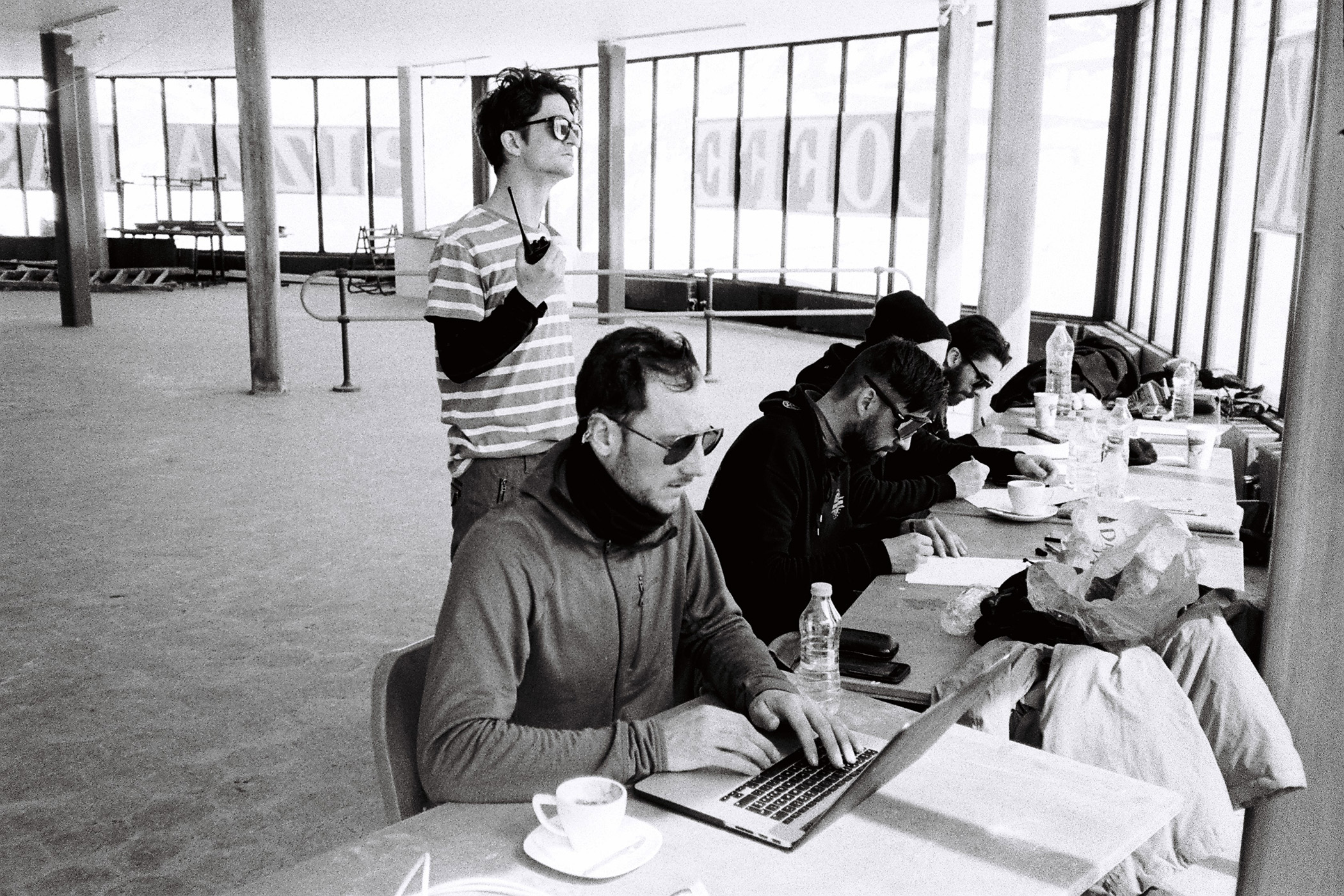
Antoine JAG
Benoît Goncerut avec la radio, les juges sont en place / Benoît Goncerut with the radio, the judges are concentrated.
This would be the final magical descent of our trip into the Zagros. It’s now time to go back to the north, towards the resort of Dizin in the Alborz mountains, 70km north of Tehran. That’s where Arnaud’s good friend and pillar of the project We Ride In Iran, Amir Raieszadeh awaits us. This project was started in 2013 by Arnaud and Benoît Goncerut and strives to promote skiing and snowboarding in Iran and indeed to further the concept with organised freeride, touring and heliski trips. This structure has also organised freestyle competitions in last few years in partnership with Swiss Ski, the FIS and the resort of Laax. With Arnaud and Benoît both being international freestyle judges, in skiing and snowboarding respectively, bridges are gradually being built under the veil of Swiss neutrality. We will have the chance to attend a big air snowboard contest for women and men in Dizin. Arnaud will join Benoît as co-organiser and judge.
But before going back to Tehran’s sprawling suburbs, the route necessary to reach the Alborz range, we made a stop at Kashan to have lunch with Marco, a friend of Arnaud’s. On the immense desert plain, it is difficult to imagine that a town could spring from the ground.This oasis town has been occupied by man since 6th millennium before our era and is built with a large part of it under ground, the magnificent traditional homes which are made in the traditional sophisticated style architecture which resists the heat of the summer. It is in one of these that we were welcomed by Marco, an Franco-Iranian who prefers to live in Iran to carry out his business of architect and painter. The house where he met us was restored by his mother and he, himself, has also bought a home of this type which he is in the process of doing up. After having twisted through a labyrinth of streets where everything is built with mud bricks, through a small door we entered into a totally unexpected palace. The first impression is the perspective. The first staircase led us to a garden designed around a pool, then in the background, a structure dissected the view of another garden of the same type. The structure is composed of two pieces separated by an alcove where lunch, just as royal, awaited us which had been prepared by our host. All around these twin gardens are the living quarters, high up and on the ground floor for winter and underground for summer. Access to them through small doors and a maze of staircases, and each time one penetrates into a room, aesthetically wonderful , another one appears behind it. The underground rooms are ventilated by aeration towers called wind towers or badgirs which trap air above the constructions to create a natural ventilation.
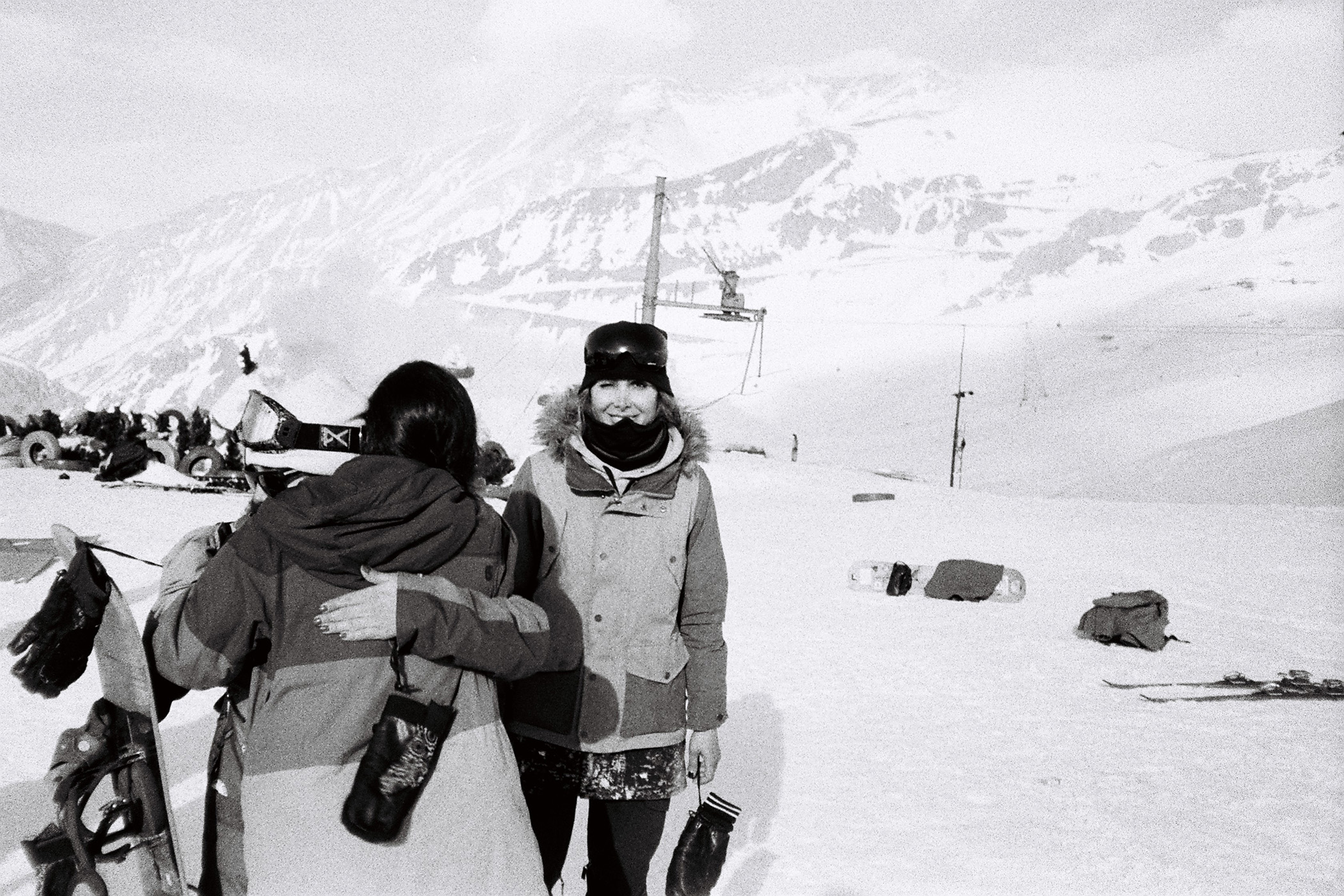
Antoine JAG
La vainqueur féminine (de dos) est félicitée / Congratulations to the female winner (back).
The impromptu meeting with Marco is one of the highlights of this voyage. We met up again on many occasions to ski in Dizin and share some great moments in Tehran. He also came to visit us in Chamonix where we discovered another of his talents, the knowledge of magnificent Persian poems which he recites without distinction in Farsi, English or French. But for the time being, even though we would have liked to stay to enjoy the erudition of our host and this house worthy of the Thousand and One Nights by eating a few clusters of grapes under the pomegranate trees, it was time to find Arman who was looking forward to dropping us off in Dizin before going back to his family.
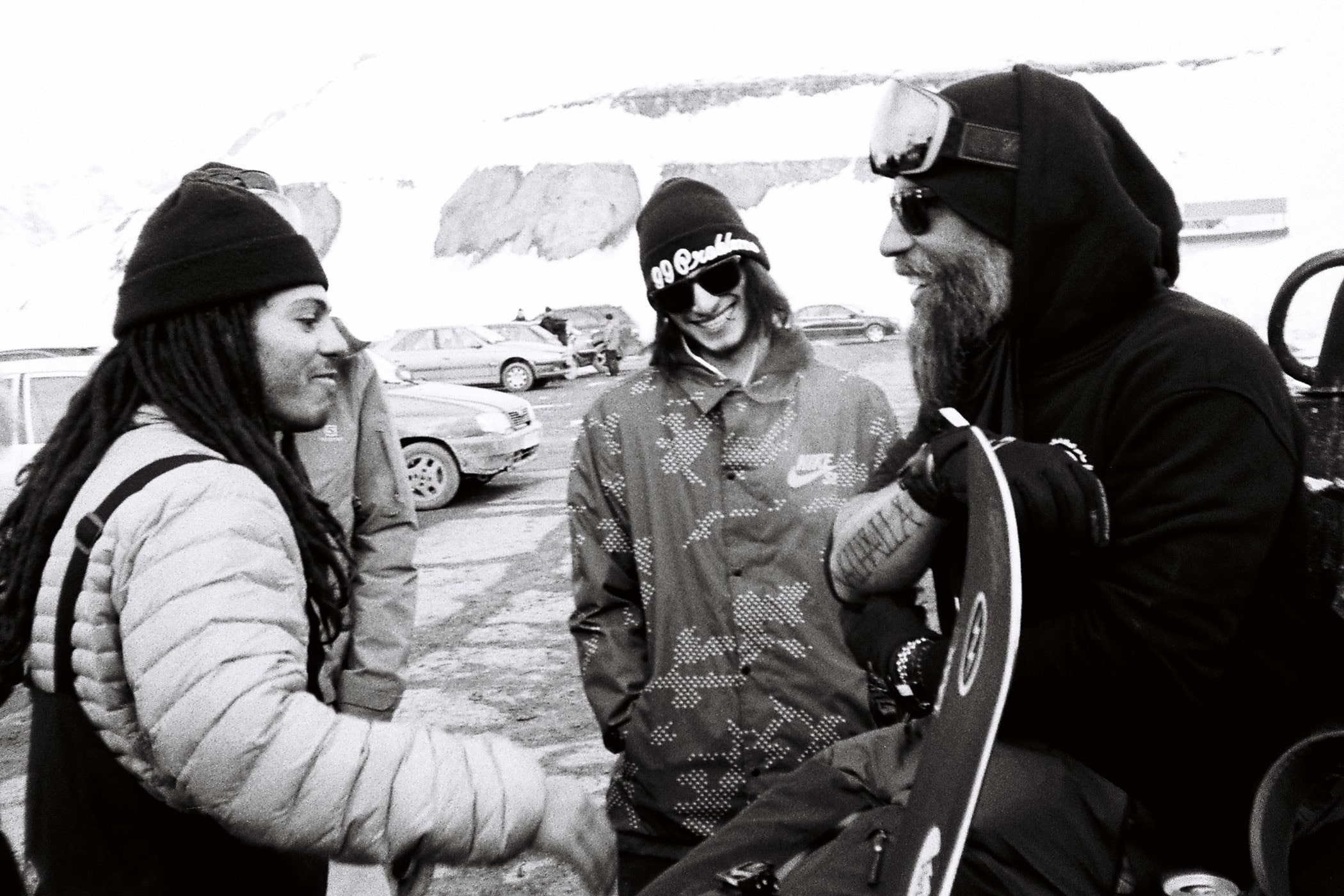
Antoine JAG
Le vainqueur masculin à gauche et Amir à droite / The male winner on the left and Amir on the right.
After having plunged into the interwoven dual carriageways which encircle and go through Tehran, we joined the small road to Dizin which took us to Amir’s. After a long leave taking with Arman, we penetrated in to a sort of penthouse built on three floors where Amir welcomed us like princes. The complex of apartments is built into the flank of a mountain all upright. There, in the big leather sofas around a big kitchen table, we were going to be looked after by Omid, Amir’s right-hand man, and literally fed for five days. Not only our band of four, but also a dozen Swiss snowboarders from Laax come to animate the snowboard competition. Amir was in his element. In the morning we left in a pick-up to go to the ski resort of Dizin. After around twenty minutes, we arrived at a big car-park at the end of which there was a big fence. The station was behind it. Even in the mountains, the Iranians, prioritise peace and quiet. Once the river was crossed, we soon joined the Off Piste, the restaurant at altitude which is managed by Amir, where he graciously served us coffee, tea and an typical omelette with chopped tomatoes and onions.
The few days that we spent at Dizin were hazy, but we enjoyed attending this much awaited big air snowboarding competition with the FIS stamp. A mixed competition where local riders were not demerited by the excited charge by the pack of Helvetic snowboarders. Amir, in two places at once, had worked extensively so that the event was a success, which, despite cultural differences, proved to be a beautiful moment of exchange between local and international riders. For their part, Arnaud, Benoît and the FIS delegation judged the event seriously and allowed two riders (♀ and ♂) to win a stay in Laax. All this ended in apotheosis in Amir’s penthouse like an evening at home, but with very good regional products. We also had time to ski-tour between Dizin and the neighbouring resort Darbandsar, enjoying the beautiful off-piste possibilities of these ski areas. And then, rapidly, after a few nights in Teheran, it was time to go home, the spirit still marveling by this journey of many contrasts and to thank our host. If only one thing rests in our minds, it would be to return as soon as possible.
